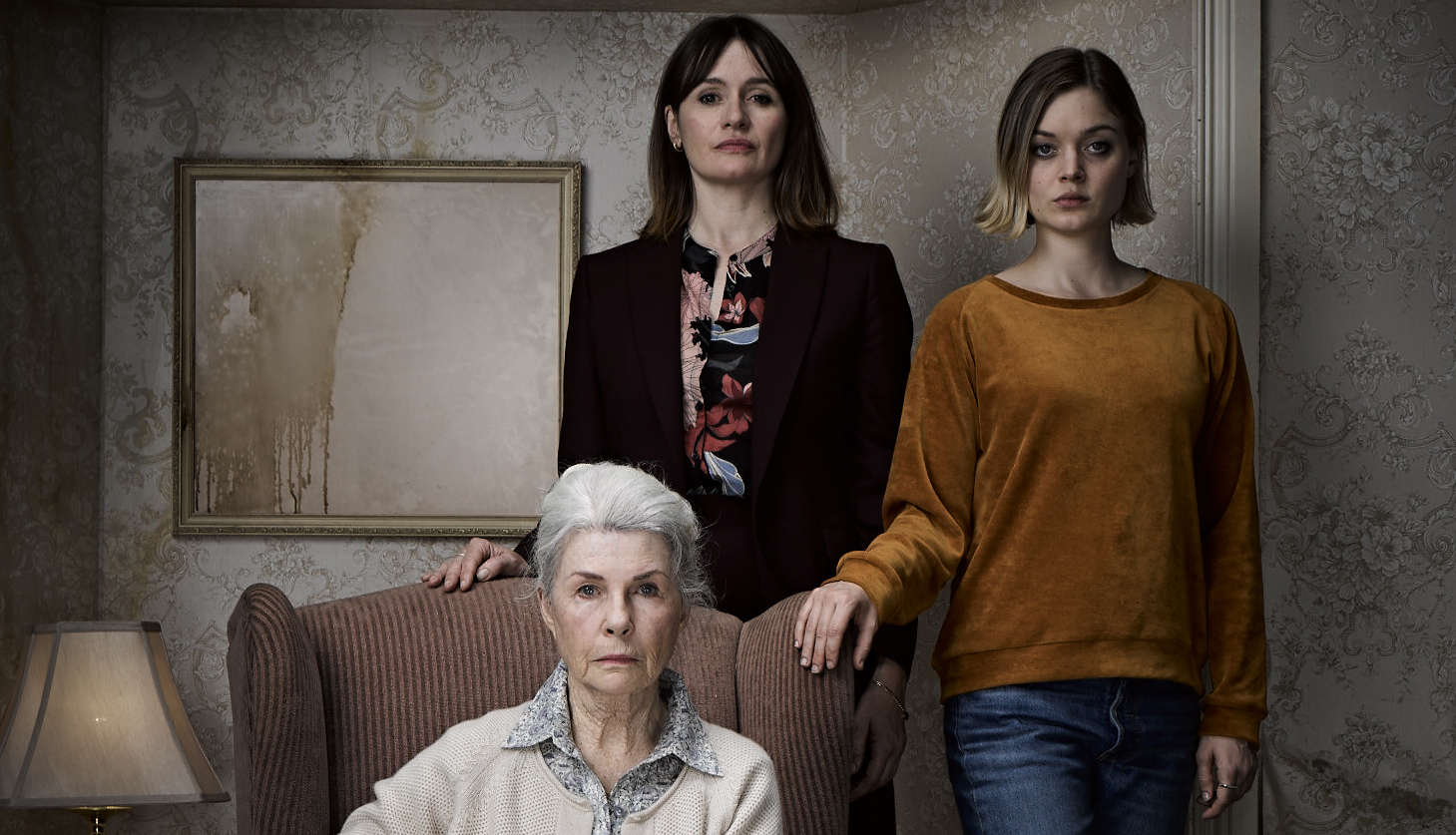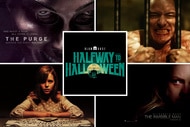Create a free profile to get unlimited access to exclusive videos, sweepstakes, and more!
Relic captures the horrors of dementia with a chilling yet cathartic conclusion

There's a distinct horror to losing a loved one to Alzheimer's disease. It's a slow-burn agony, the loss coming bit by bit until it burns your heart to ash. In IFC Midnight's Relic, this horror is probed through a heart-wrenching haunted house story. Australian co-writer/director Natalie Erika James reflected on her own family's battle against this sinister disease, inspired by her mother's strength and her grandmother's struggles. With her feature directorial debut, she not only exorcises the demons of this dark time but also offers a pulse-pounding journey and weirdly heart-warming catharsis to others who know this pain.
Major spoilers for Relic ahead.
Relic centers on three generations of women. Kay (Emily Mortimer) is a middle-aged divorcee who lives in Melbourne but tries to keep in touch with her widowed mother over the phone. However, when days pass without hearing from Edna (Robyn Nevin), Kay takes her twenty-something daughter Sam (Bella Heathcote) with her on a horrid homecoming at gram's rural cottage. The house is marred with decay. Water stains ooze down walls. Rotten fruit attracts flies in a kitchen bowl. There's no sign of Edna, but Sam and Kay begin to sense something is in the house. Security lights turn on without apparent reason. The sound of breathing can be heard in a closet, but when checked--there's no one there.
Thankfully, Edna soon returns. Yet the terror has only just begun. Checked out by a doctor, she's lucid and even annoyed at all the fuss being made. Aside from a large purple-black bruise on her chest, Edna seems fine. She'll offer no answers on where she's been, acting affronted by the intrusion of such questions. Then, in quieter moments, her strong voice trembles as she speaks of the thing that keeps coming in. She insists it's this thing that flooded the bathroom, that moves her favorite armchair out of its spot, and that lurks under her bed. To Kay and Sam, these seem delusions mustered from a mind in decline. But mother and daughter will soon learn this monster is real, and it's closing in on all of them.
James uses horror tropes like a shadowy setting, spooky whispers, a dark figure lurking, and increasingly surreal imagery to brew a sense of dread. However, those who've seen the toll Alzheimer's takes on a person might be more horrified by the film's most grounded scares, like an intimate conversation between grandmother and granddaughter.
Convinced Edna is no longer fit to live on her own, Kay goes to check out an assisted living facility. Sam loathes the idea, realizing how much her grandmother values the family home. So, while Kay's away, Sam gently suggests to Edna that she move in. Earlier, they'd had a lovely moment where the gram had given the girl her wedding ring. In this, you could see the radiant love and respect the two have for each other. But now, Edna's tone is sharp. She's furious at how the pair appears to be conspiring and infantilizing her. She acts like an altogether different person, slinging a slur when referring to a neighbor boy she'd been close to for years. She practically growls at Sam's suggestion to move in then is outraged to see the band on her finger. With no memory of gifting it to her, Edna lashes out verbally and physically with a viciousness so spontaneous and out of character that Sam reacts as if she's seen a ghost.
This scene hits hard because it swiftly sums up some of the toughest traumas the families of Alzheimer's victims endure. In Edna, I could see bits of my late grandfather. He was a gentle man with a warm smile and endless compassion to help whomever however he could. He loved going on three-mile bike rides every day, even into his 70s. He loved working in his woodshop, creating crafts like birdhouses and wind chimes out of spare parts. I'd never heard him say an unkind word in my life, and never felt anything but love and joy when he looked at me. And then the monster came.
My grandfather's bright eyes went dull. His language became unpredictably harsh. His grown children had to hide his bike and lock up his shop because he might wander off and not remember how to get home, or he might injure himself on the power tools he could no longer be trusted with. And when he looked at me, I didn't see love or joy, I saw confusion. He didn't know who I was anymore.
That is how Sam felt. The horror of looking at someone you love and realizing that while they are right in front of you, they're not really there anymore.
Relic is a horror story in three parts, exploring this journey through each of these generations. For Sam, the horror comes from realizing the loss she cannot stop. For Edna, it's above the whirlpool she can try to ignore but cannot escape. In lucid moments, we see Edna as she wishes to be: the resilient matriarch with strong opinions, a home of her own, independence, and a hobby of creating intricate candle carvings. Slowly, these are stripped away by the monster. Her candle cutting becomes a bloody mess. Post-it notes throughout the house offer reminders like "take your pills," suggesting Edna's not entirely self-sufficient anymore. Then, there are worrisome notes, like one that reads "don't let it in."
In quiet scenes, we hear Edna bickering with the monster, in others we see her scared. She confesses to Sam, "Since your grandfather passed, the house feels unfamiliar, bigger somehow." Later, Sam will learn what this means when a secret door leads her into strange, shrinking passages. Her grandmother's home transforms from familiar to a foreboding labyrinth, in which the Minotaur is Edna's dementia personified. You can run from it, but you can't escape. In the end, we witness helplessly as Edna is consumed by it. The bruise on her chest grows to swallow her whole until nothing is left of the Edna known and loved.
Finally, Kay's story is about learning to accept this monster as a part of parent-child love. Relic shows the ache of roles reversing, as Kay must care for her ailing mother. It's a responsibility she initially rejects, turning to the assisted living facility. But once she understands Edna's monstrous diagnosis, Kay says simply, "I can't leave her." She doesn't flee the house and its horrors but willingly returns for a finale that is bold and breathtaking.
After a violent climax, in which Edna became a growling beast stalking her daughter, she now sits calmly and quietly on her bed. Kay tends to her with gentle strokes. Then, Kay steadily begins to peel away the skin and hair from her mother's body. She does this with tenderness and no repulsion. What lies beneath the shed flesh is a coal-black creature, strange and solemn. Kay kisses its forehead, expressing that she accepts her mother's transformation. She will care for Edna even if the mother she knew is already gone.
But the horror is not over.
When Sam reluctantly enters the bedroom, she finds her mother cuddling the monster. Without a word, she curls up behind her mother, suggesting she too will accept Edna as she is now. It almost seems a happy ending, or as happy as you could hope for in horror. Then, Sam spots something on the back of Kay's neck: a bruise. Early on, her great grandfather is mentioned who went through some vague tragedy. Now, it's happened to Edna. The bruise promises Kay will be next. Sam will follow. Ultimately, Relic paints Alzheimer's as a curse passed down, a curse that cannot be escaped. All we can do is hold each other close and take comfort in each other, even as the monster is breathing down our necks.














